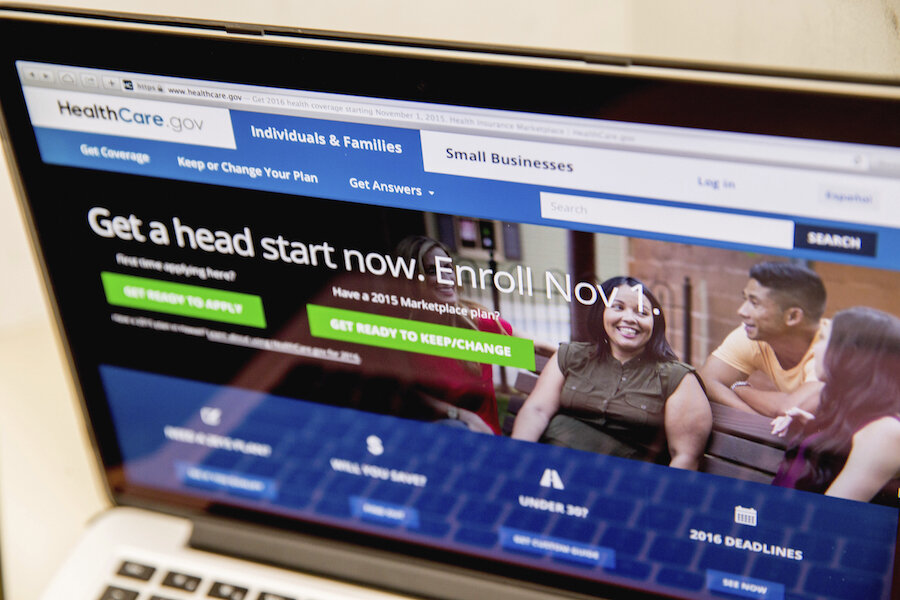It's November. Time for health insurance open enrollment.
Loading...
Open enrollment starts Nov. 1 and runs through Jan. 31, 2017, for people purchasing individual health insurance for 2017. This open enrollment period applies to anyone who wants to buy a policy from a state or federal health exchange, or directly from an insurer. You also can buy a plan through a health insurance agent.
Importantly, these three months are the only time of the year that you can buy a health plan if you don’t get one through work. If you miss this health insurance open enrollment period, you won’t be able to buy a policy unless you have a “qualifying life event” — such as a marriage or childbirth.
Under the Affordable Care Act, almost all Americans must buy health insurance or face a penalty.
Start thinking now about your health plan purchase so that you’ll have the time to choose wisely, with the help of this information.
3 important things to know about open enrollment
- You could qualify for tax subsidies when you sign up for a plan, but only if you use a state or federal health insurance marketplace. You can get to your exchange by going to the federal site Healthcare.gov and entering your ZIP code. If you live in a green state on the map below, you’ll be sent to a state marketplace; otherwise, you’ll continue on the federal marketplace.
- If you don’t purchase a health plan by Jan. 31, you could owe a tax penalty for no insurance for 2017 — up to 2.5% of your household’s modified adjusted gross income, which would be deducted from your tax refund.
- Health plans on the exchanges are grouped into metal tiers — bronze, silver, gold and platinum — which can help you compare costs. The tier indicates the portion of care that will be paid by the plan, as a percentage of overall charges:
- Bronze plans pay 60%.
- Silver plans pay 70%.
- Gold plans pay 80%.
- Platinum plans pay 90%.
5 steps to shopping for health insurance
- Check out health insurance quotes online using a comparison site or the health insurance exchanges available through Healthcare.gov. There could be more than one insurer offering plans in your area.
- Eliminate any health plan with a monthly premium that won’t fit into your budget. “If you can’t pay for it, you won’t have insurance anymore. The most important thing is to have coverage,” says Adria Gross, patient advocate and author of “Solved! Curing Your Medical Insurance Problems.”
- Compare each plan’s deductible, typically listed near the premium. In most plans, that’s how much you’ll have to pay upfront for medical care before the insurer starts to pay for the services.
- Look at the costs of care. For each plan, look at copayments and coinsurance to see how much you’ll pay for doctor visits and other treatments, aside from the deductible.
- Based on all these costs — the monthly premium and out-of-pocket costs (annual deductible, copays and coinsurance) — choose a few plans to compare more closely. Plans labeled “Simple Choice” have the same out-of-pocket costs within each metal tier level.
Make sure your plan does these 3 things
- Covers your doctors and other medical providers. Have a primary care doctor you like? Only one hospital in your town? Make sure they take the health plan you’re considering. “You don’t even want to consider a plan if your doctor isn’t in the network,” says Philip Lee, a health insurance broker in Lafayette, California. The plan’s “provider network” is the group of doctors and facilities that take the plan. The list is available in the plan details or on most insurers’ websites. If your doctor isn’t covered, you may have to pay full price or choose a higher-cost plan.
- Covers your prescription drugs. If you take a prescription, make sure it’s covered by the plans you’re considering. A drug list for each plan can often be found on the insurer’s website.
- Covers benefits you use frequently. If you have continual medical needs such as insulin, intravenous therapy or frequent blood tests, check the plan’s summary of benefits for that service. If you’re not sure whether something is covered by the plan, call the insurer’s customer service line.
Lacie Glover is a staff writer at NerdWallet, a personal finance website. Email: lacie@nerdwallet.com. Twitter: @LacieWrites.
This article first appeared in NerdWallet.







